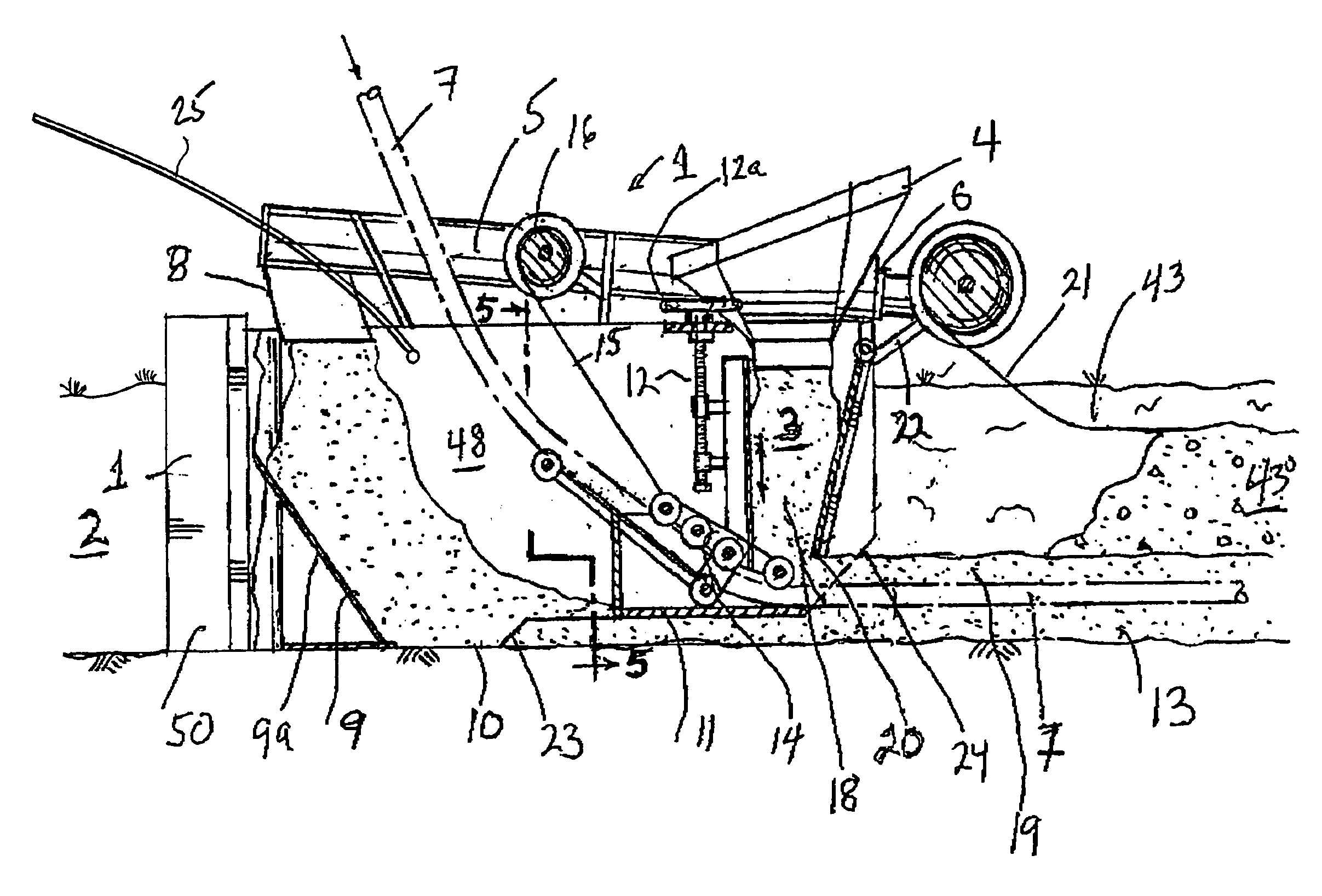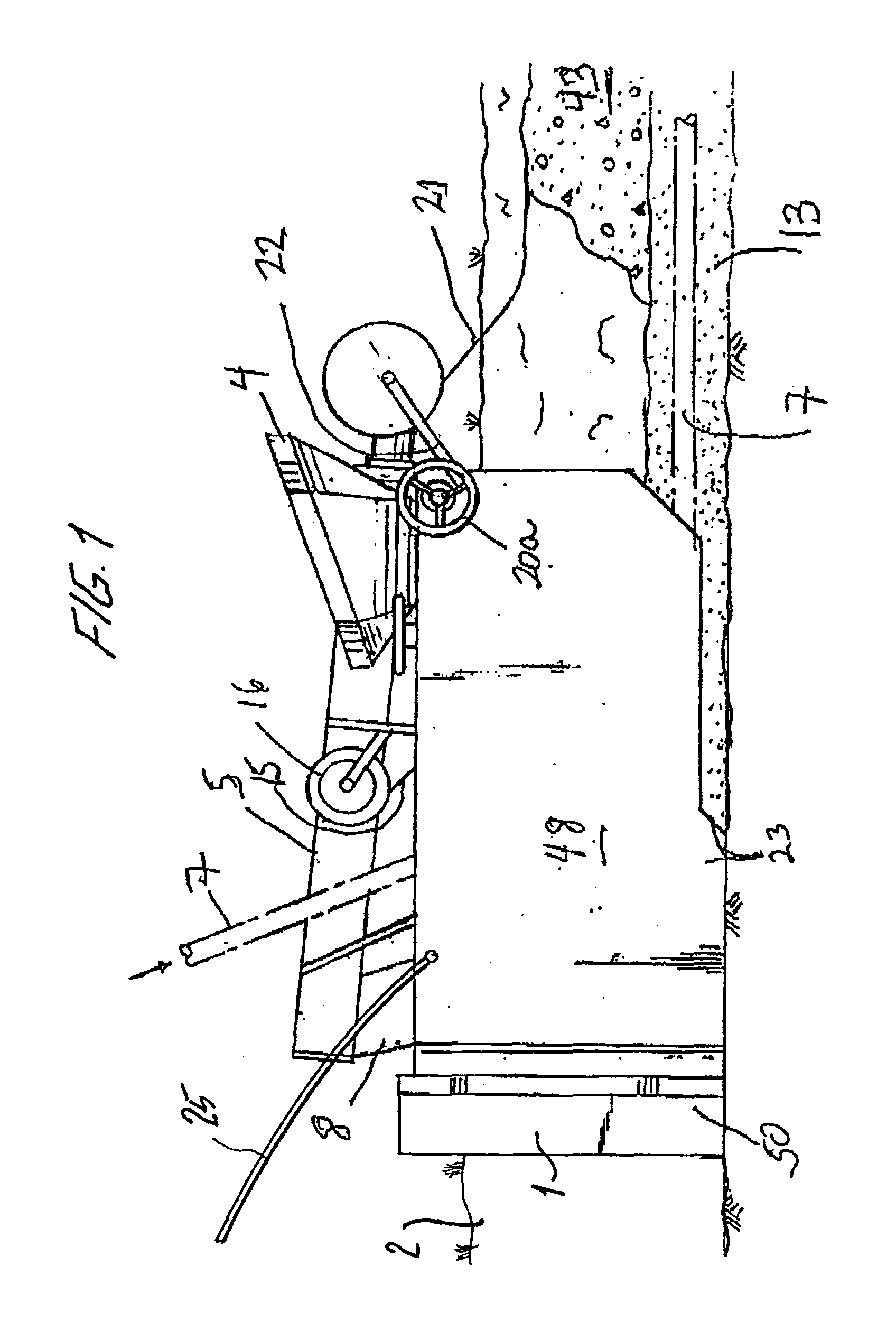Apparatus for establishing adjustable depth bed in trenches for utility lines and encasing the lines
a technology of adjustable depth bed and utility line, which is applied in the direction of pipe/joint/fitting, pipe laying and repair, construction, etc., can solve the problems of affecting the installation of utility or utility, and often not being able to guarantee the predetermined depth of select material, etc., to achieve the effect of high versatility and simplified supply of material
- Summary
- Abstract
- Description
- Claims
- Application Information
AI Technical Summary
Benefits of technology
Problems solved by technology
Method used
Image
Examples
Embodiment Construction
Referring to FIGS. 1 and 2, the mechanized unit 1 of the invention is pulled through an existing trench 2, usually dug by a trenching unit (not shown) of any conventional type, or by any other mechanical means. For example, the unit 1 can be mounted on the same frame as the trenching unit that digs the trench 2. The combined trenching unit and the mechanized unit 1 can have its own motive means or be pulled or pushed along by any suitable motive means. Alternatively, the trenching unit and the unit 1 of the invention can be separate from each other and each moved by its own motive means. The mechanized unit 1 is moved forward in the trench 2 (right to left in FIGS. 1 and 2).
The unit 1 has a frame 50 on which a hopper 4 is mounted. Select material 3 is loaded into the top inlet of hopper 4 by any mechanical means such as a mobile material handling unit, ready mix truck, front end loader or any other suitable piece of equipment. The material can be sand, concrete, soil, mixtures of ma...
PUM
 Login to View More
Login to View More Abstract
Description
Claims
Application Information
 Login to View More
Login to View More - R&D
- Intellectual Property
- Life Sciences
- Materials
- Tech Scout
- Unparalleled Data Quality
- Higher Quality Content
- 60% Fewer Hallucinations
Browse by: Latest US Patents, China's latest patents, Technical Efficacy Thesaurus, Application Domain, Technology Topic, Popular Technical Reports.
© 2025 PatSnap. All rights reserved.Legal|Privacy policy|Modern Slavery Act Transparency Statement|Sitemap|About US| Contact US: help@patsnap.com



